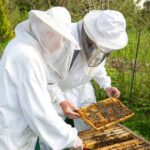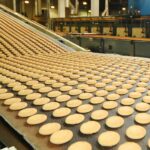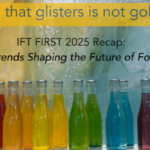
This year’s IFT FIRST in Chicago gathered thousands of food scientists, startups, and global brands under one roof to tackle some of the toughest questions facing our industry: What does “clean label” really mean in 2025? How are new regulations shifting ingredient strategies? And how will emerging technologies redefine what—and how—we eat?
For companies committed to real, recognizable ingredients like honey, here are seven key takeaways shaping the future of food.
1) Clean Label ≠ Clean Process
Clean label remains a top priority, but it’s becoming increasingly difficult to define.
At IFT, we heard frustration around the gap between how clean a label looks and how clean a process actually is. Ingredients like solvents and processing aids don’t always show up on labels, but they’re still part of the product’s story.
The conversation is shifting from what’s listed on the package to how the product is made. That’s a big opportunity for brands already using whole, minimally processed ingredients with nothing to hide.
2) State Legislation Is Turning Up the Heat
New MAHA laws in Texas and Louisiana (SB 25 and SB 14) are raising the bar. They require warning labels for foods containing additives banned or restricted in other countries—synthetic dyes, emulsifiers, and preservatives among them.
This is likely just the beginning. As public awareness grows, large brands will face increasing pressure to reformulate their products. Smaller, clean-label companies are already ahead, especially those with natural alternatives that do more than just replace color or texture.
3) Natural Food Coloring Challenges
Color reformulation came up repeatedly—not as a branding decision, but as a real technical hurdle. Parents are especially wary of synthetic dyes, yet finding vibrant, shelf-stable, pH- and heat-tolerant natural alternatives is incredibly difficult.
The carmine debate (a red pigment derived from insects) highlights the trade-offs: effective and natural, but problematic for vegan, kosher, or halal consumers. It’s a reminder that color isn’t a plug-and-play fix—it affects your entire formula, from sensory profile to shelf life.
The future? Look for more innovation in fermentation-based and AI-modeled color solutions. But for now, brands that can find real-food solutions with strong performance will have an edge.
4) Reformulating Without Added Sugar
Reducing added sugar remains a key driver, but companies are finding ways to manipulate the label.
We saw examples of enzyme-treated carbs, fiber syrups (like tapioca or chicory), and sweetener stacking to reduce perceived sugar content without actually reducing sweetness. It’s technically compliant, but it’s eroding consumer trust.
Consumers want clarity, not loopholes, and that’s where honey shines: as a single-ingredient sweetener with nutritional value, functionality, and a natural story rooted in ecology, not chemistry.
5) Label Language Is Losing Credibility
“Natural.” “Plant-based.” “Flavor.” These once-powerful words are now under fire. Consumers want to know exactly what’s in their food and how it got there.
At IFT, brands that could tell a full, transparent ingredient story stood out. Clarity is the new currency, and companies that lead with process, not just marketing, will be better positioned to earn lasting trust.
6) AI Is Changing the Game—Fast
AI is already reshaping product development, trend forecasting, and formulation. It’s fast, efficient, and potentially dangerous if it’s used to push more ultra-processed foods to market.
That’s why ingredient-first brands need to be part of the AI conversation. We have an opportunity to guide innovation toward better, not just faster.
7) “Plant-Based Honey” Is Misleading
One of the more jarring moments came when a brand marketed its product as “plant-based honey.” Let’s be clear: honey isn’t just sugar from flowers—it’s the result of a complex biological process unique to bees.
Lab-created syrups may mimic the taste and texture, but they don’t carry the ecological, nutritional, or functional value of real honey. Replacing bees with tanks doesn’t solve the sustainability equation—it ignores it.
The rise of synthetic alternatives only reinforces the value of honey, reminding us to stay clear about what makes honey authentic and why that matters.
Where We Go From Here
IFT FIRST made one thing clear: the industry is in flux.
Regulators are applying pressure. Consumers are asking smarter questions. Technology is accelerating, and the gap between clean-label marketing and actual ingredient transparency is becoming harder to ignore.
That’s good news for real-food brands and a major opportunity to lead with integrity. Whether it’s redefining clean label through process, replacing synthetics with functional whole ingredients, or speaking honestly about what makes food “real,” there’s space to make a meaningful impact.
At GloryBee, we’re committed to being part of that future. From certified, ethically sourced honey to clean ingredient solutions that deliver both functionality and transparency, we’re here to help brands navigate what’s next, without compromising on values.
Looking for a trusted partner in clean, functional sweeteners?
Request a free quote from GloryBee today, and let’s create a future built on real food and real trust.





